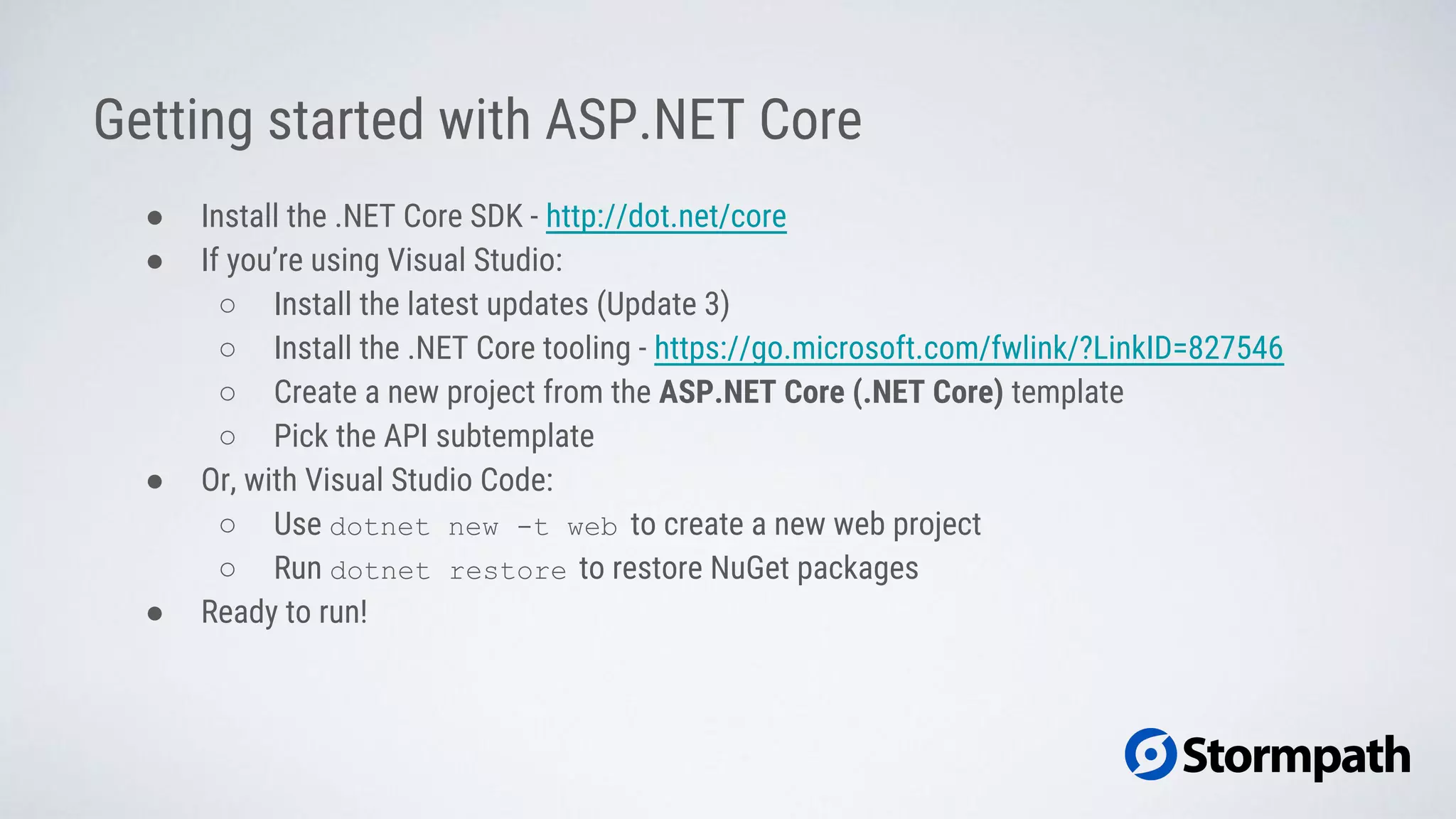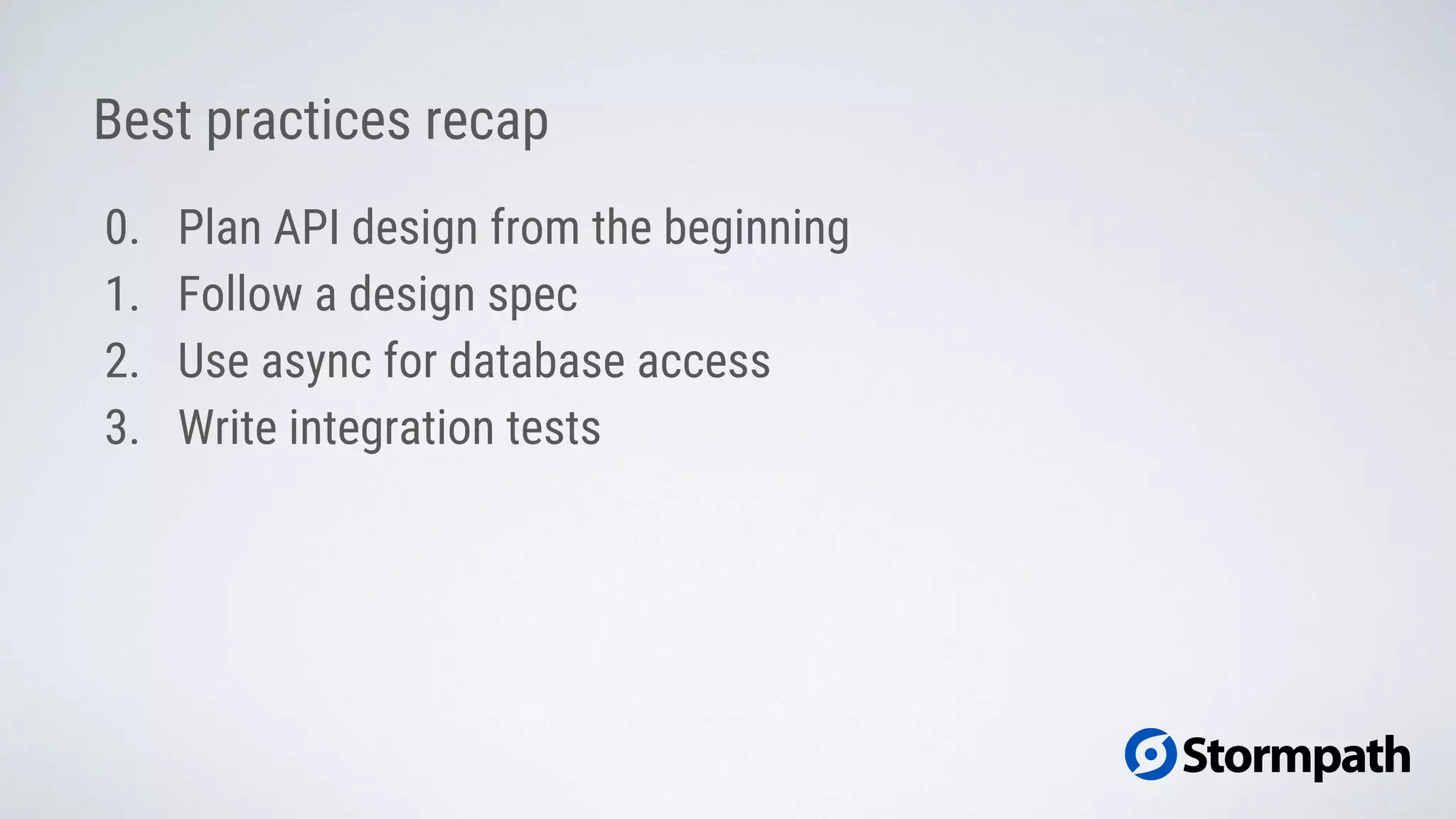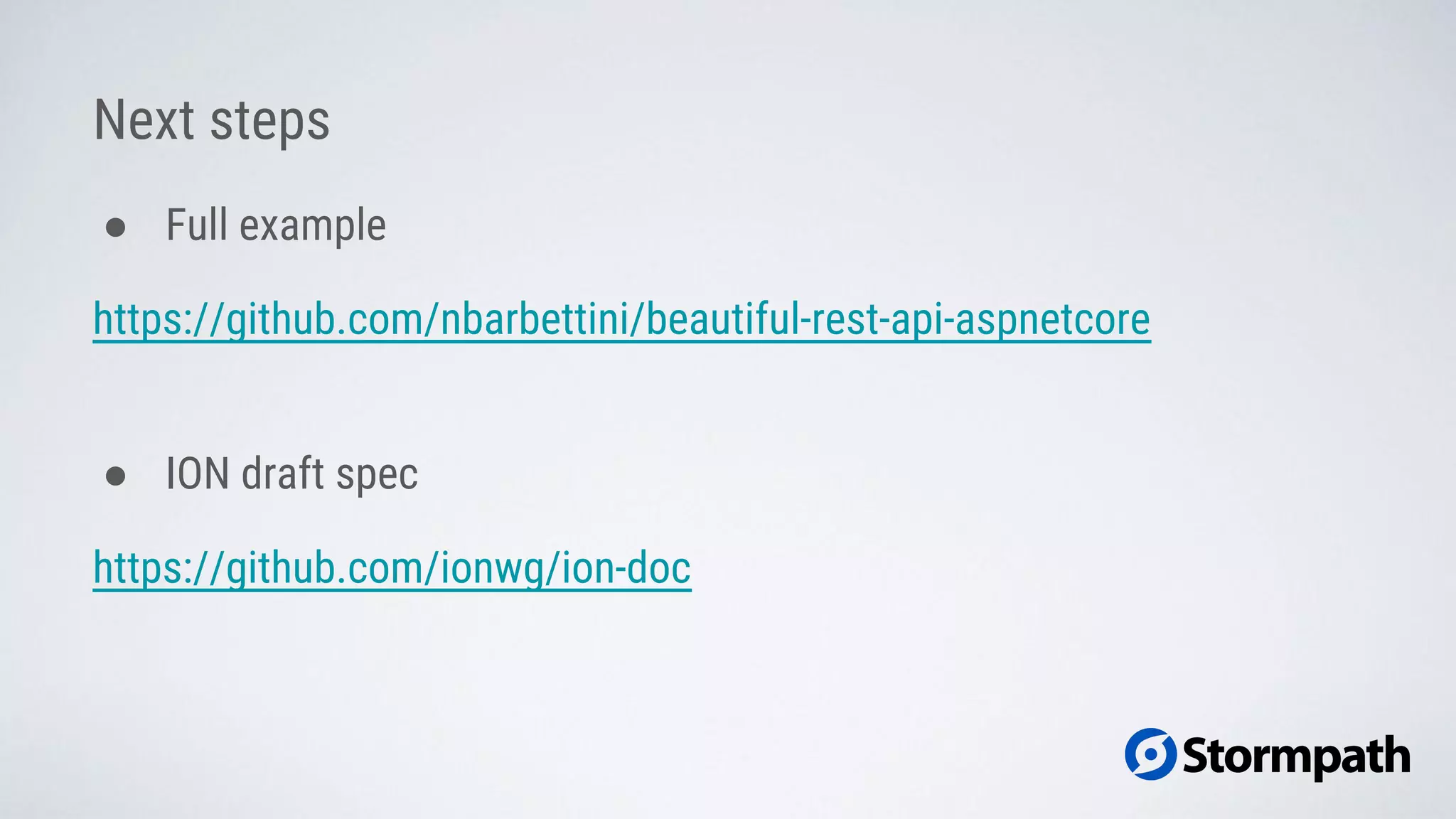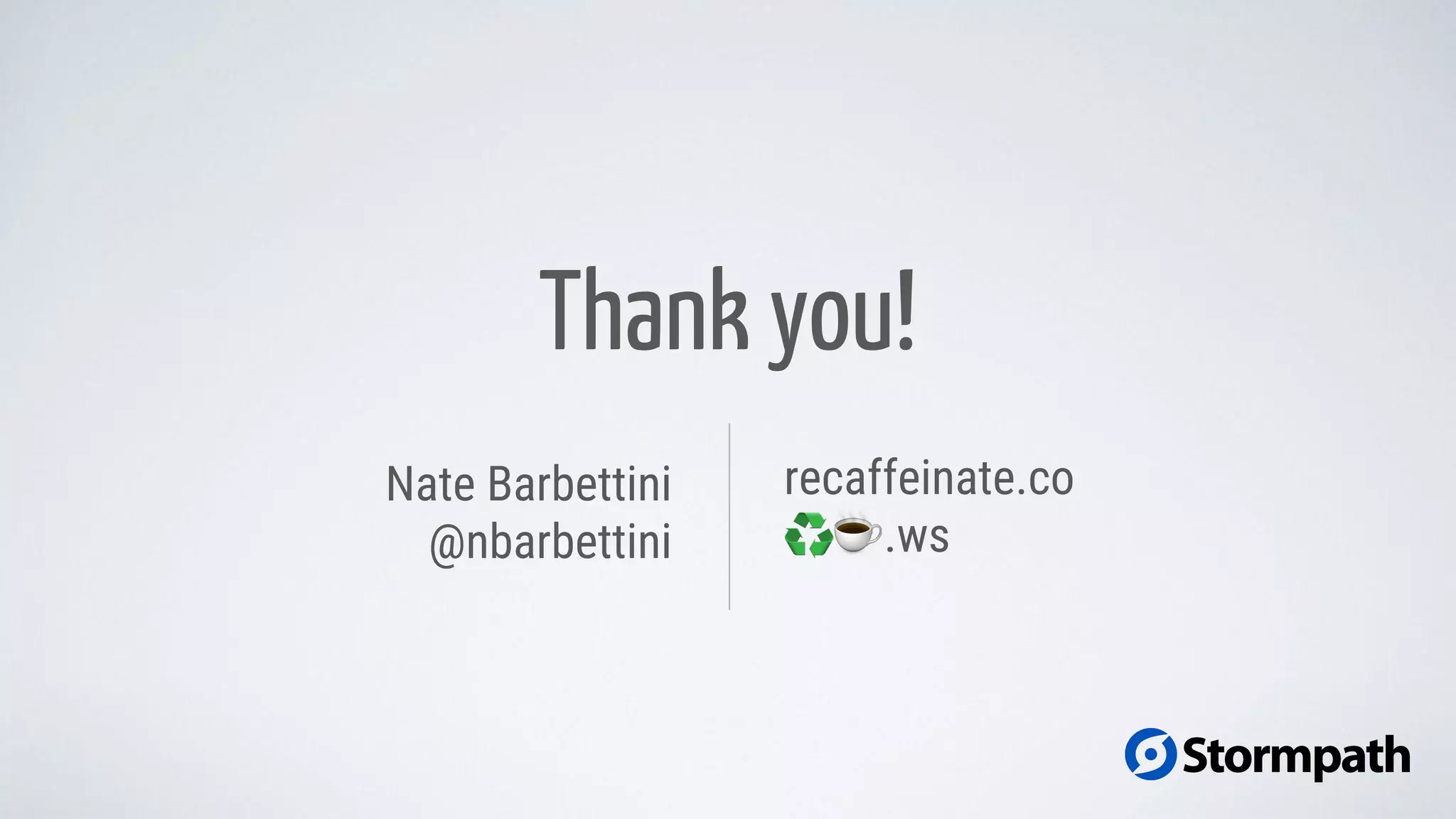The document is a presentation by Nate Barbettini on creating REST APIs in ASP.NET Core, covering topics like the importance of API design, HATEOAS principles, best practices for API development, and a step-by-step guide to setting up a project. Key best practices include planning API design from the start, following a specification, using asynchronous database access, and writing integration tests. The presentation also provides links to resources and examples for further learning.
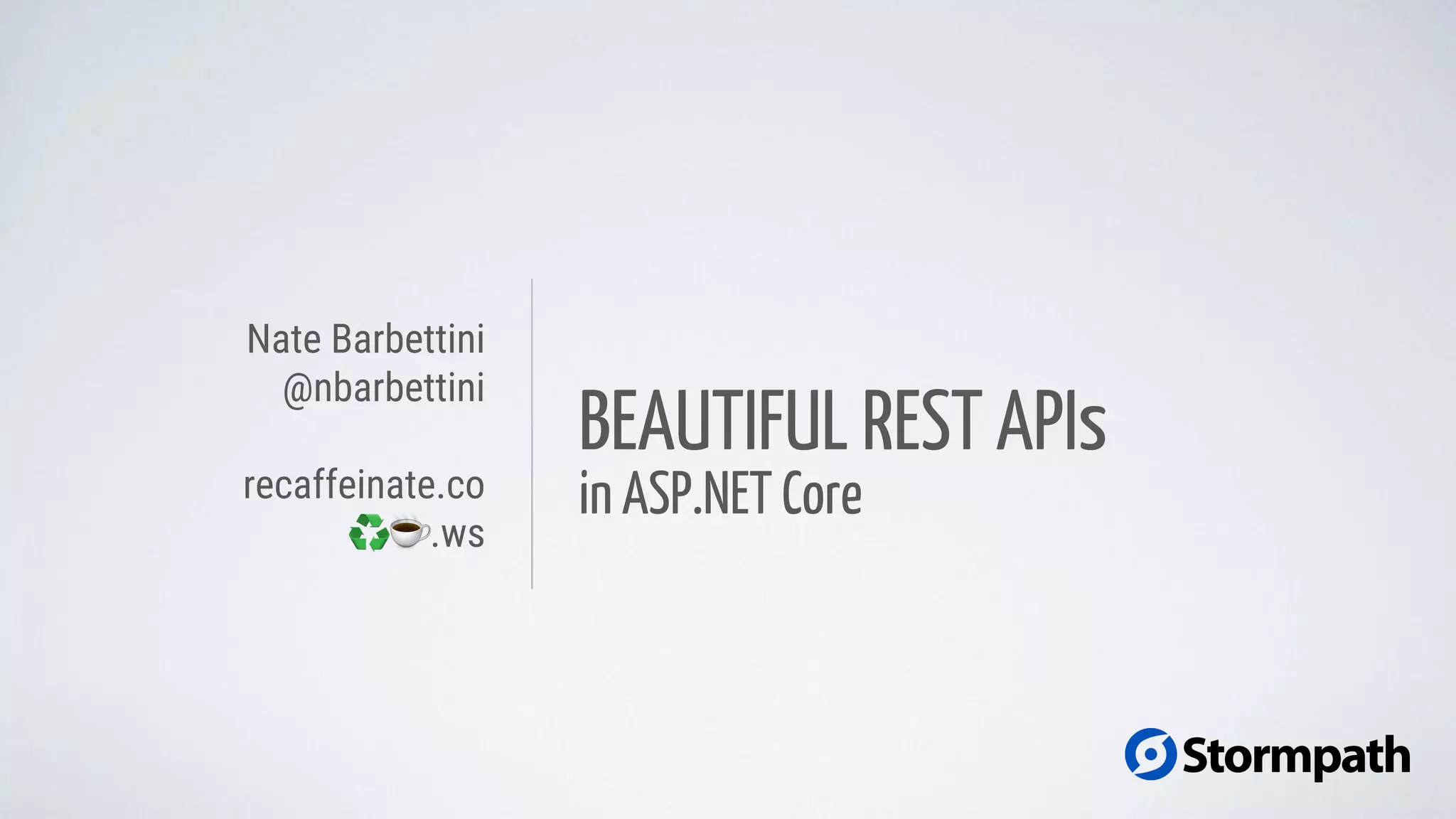
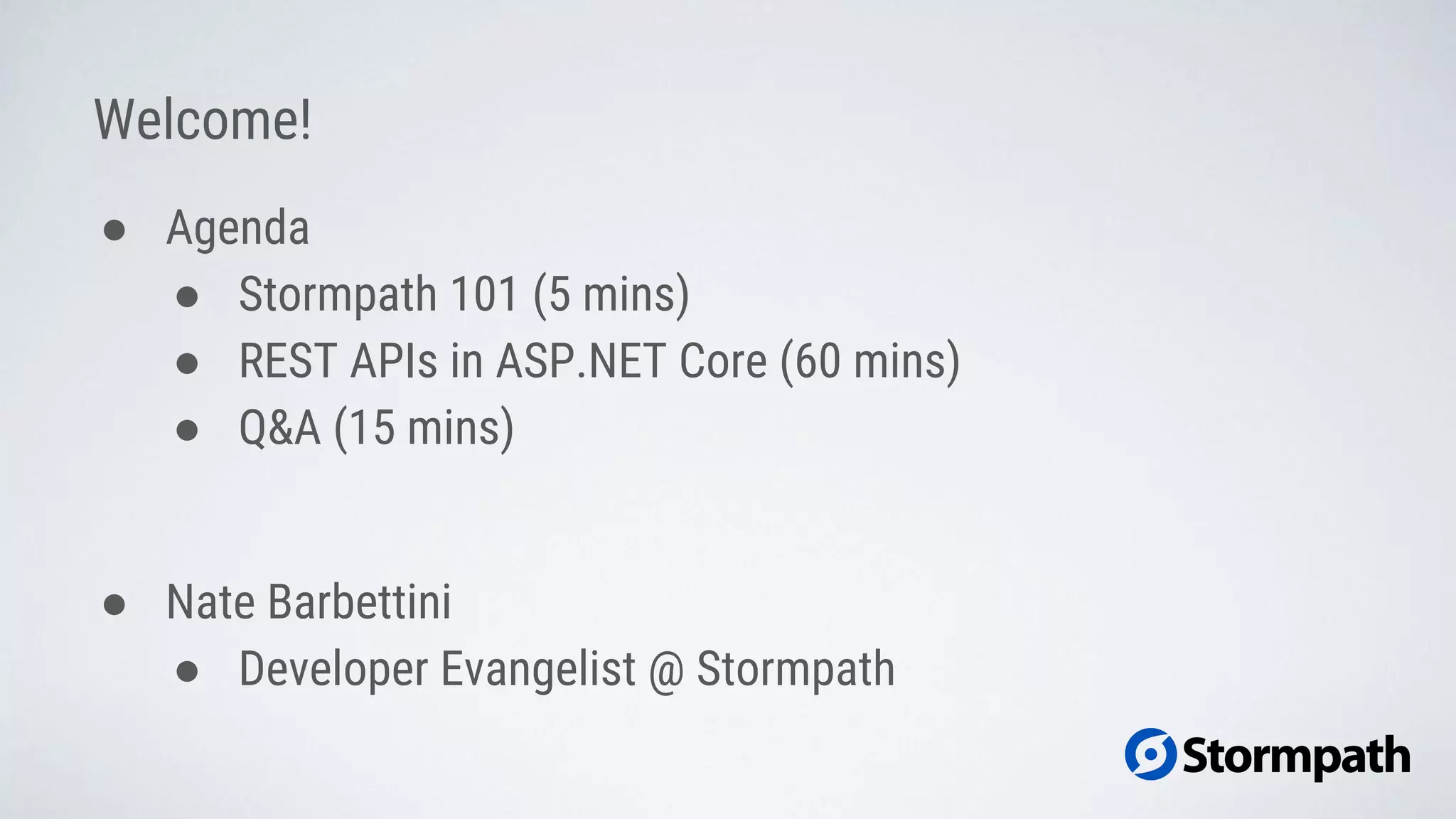
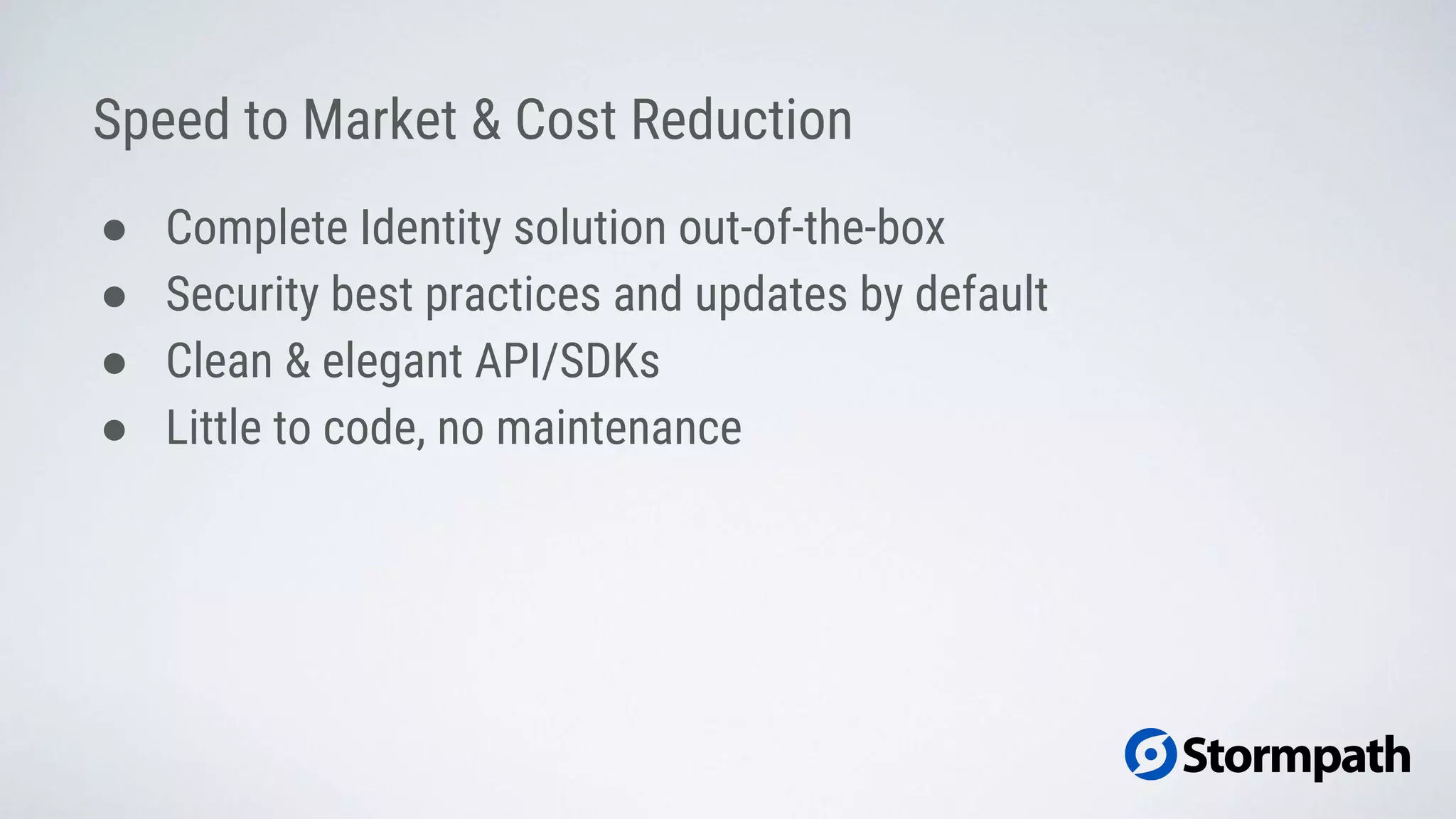
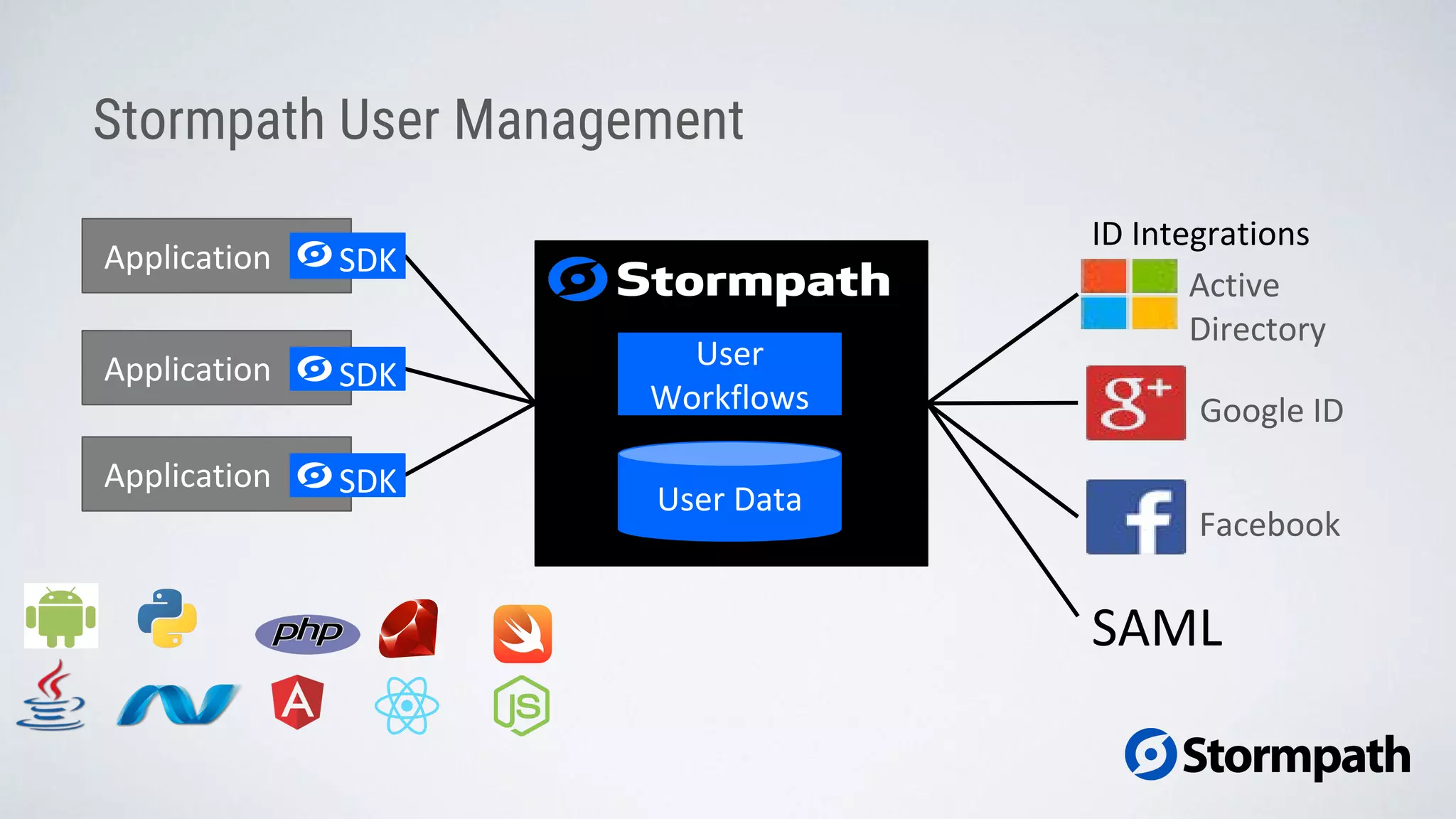
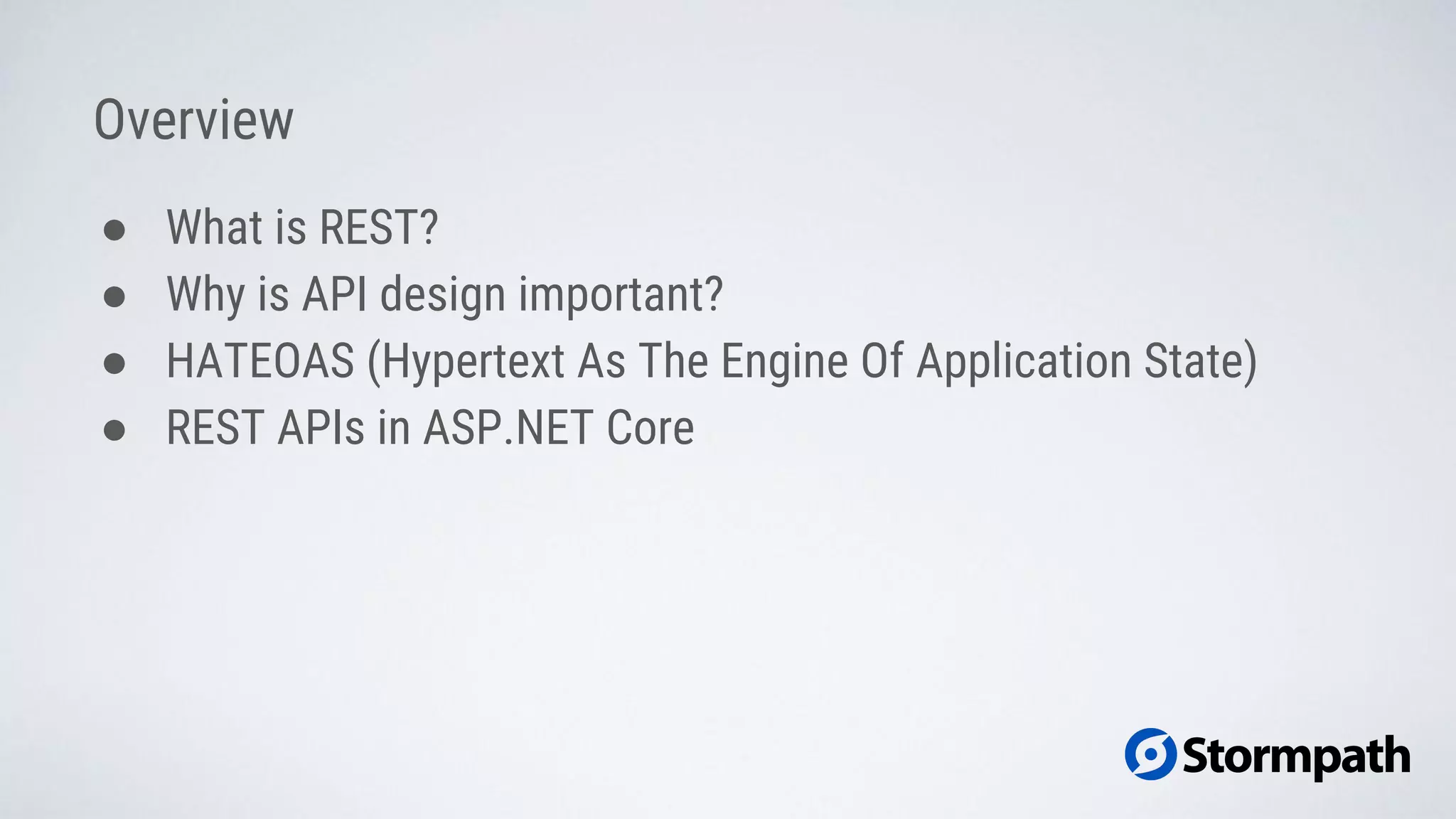
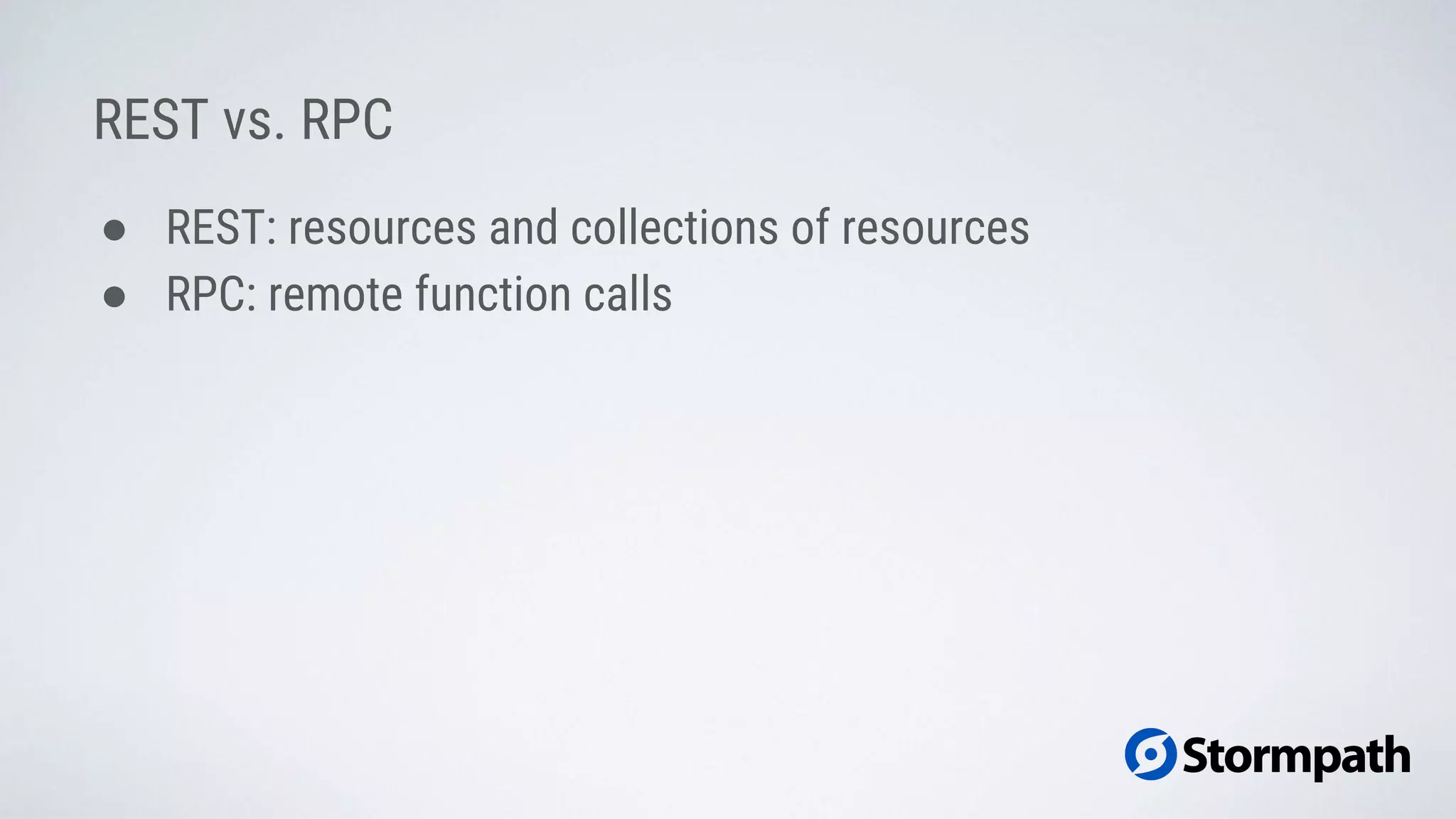
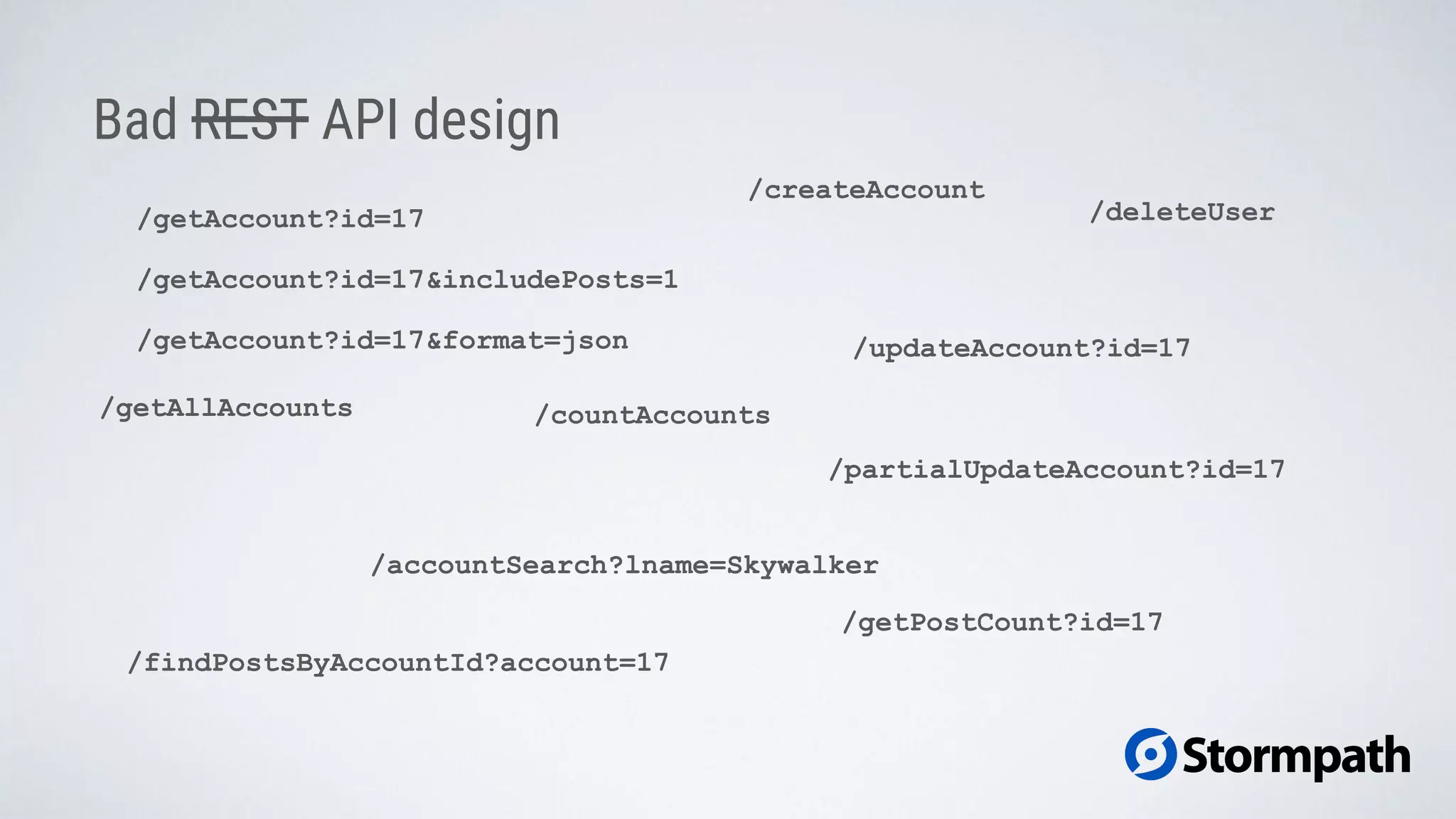
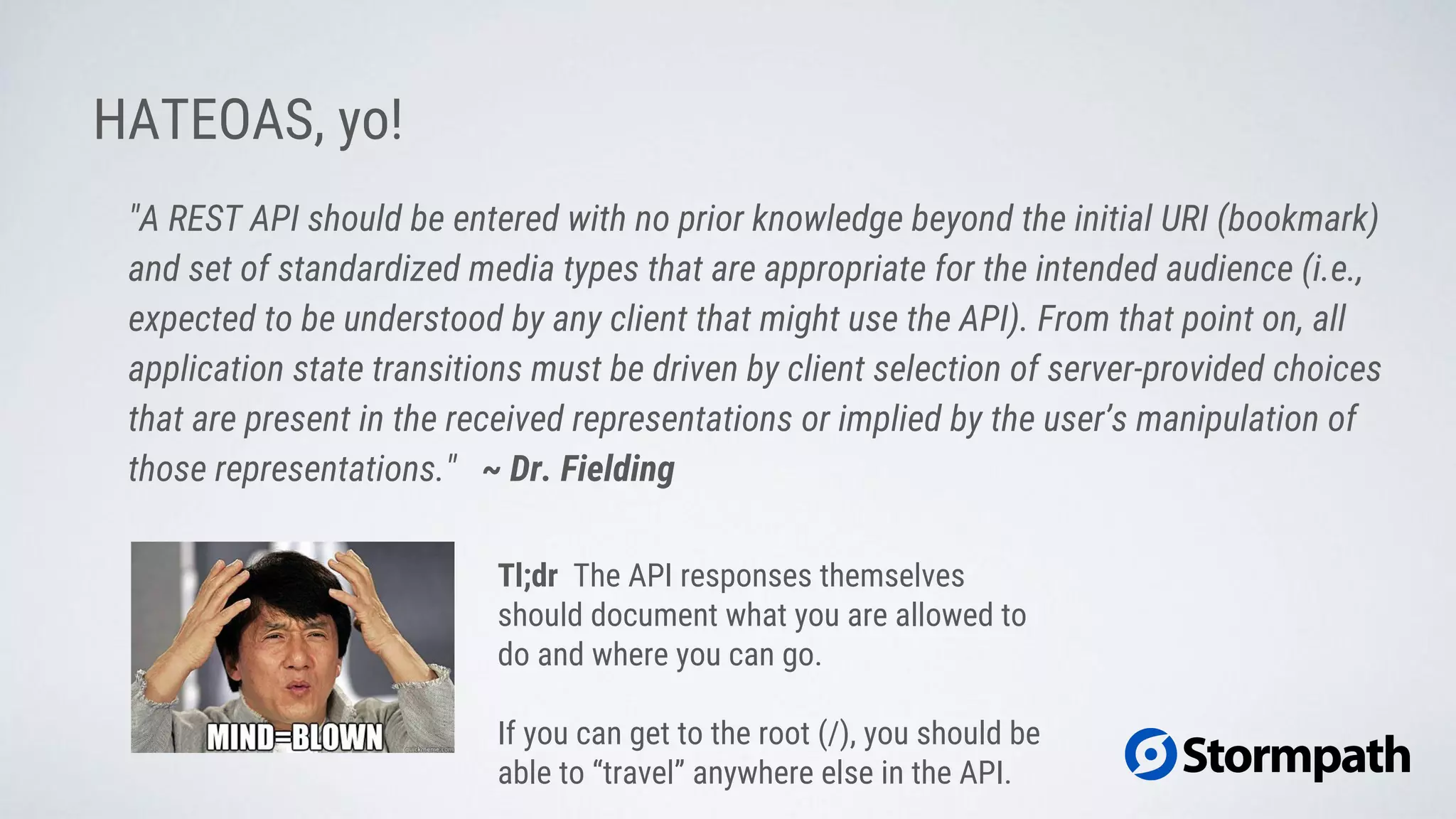
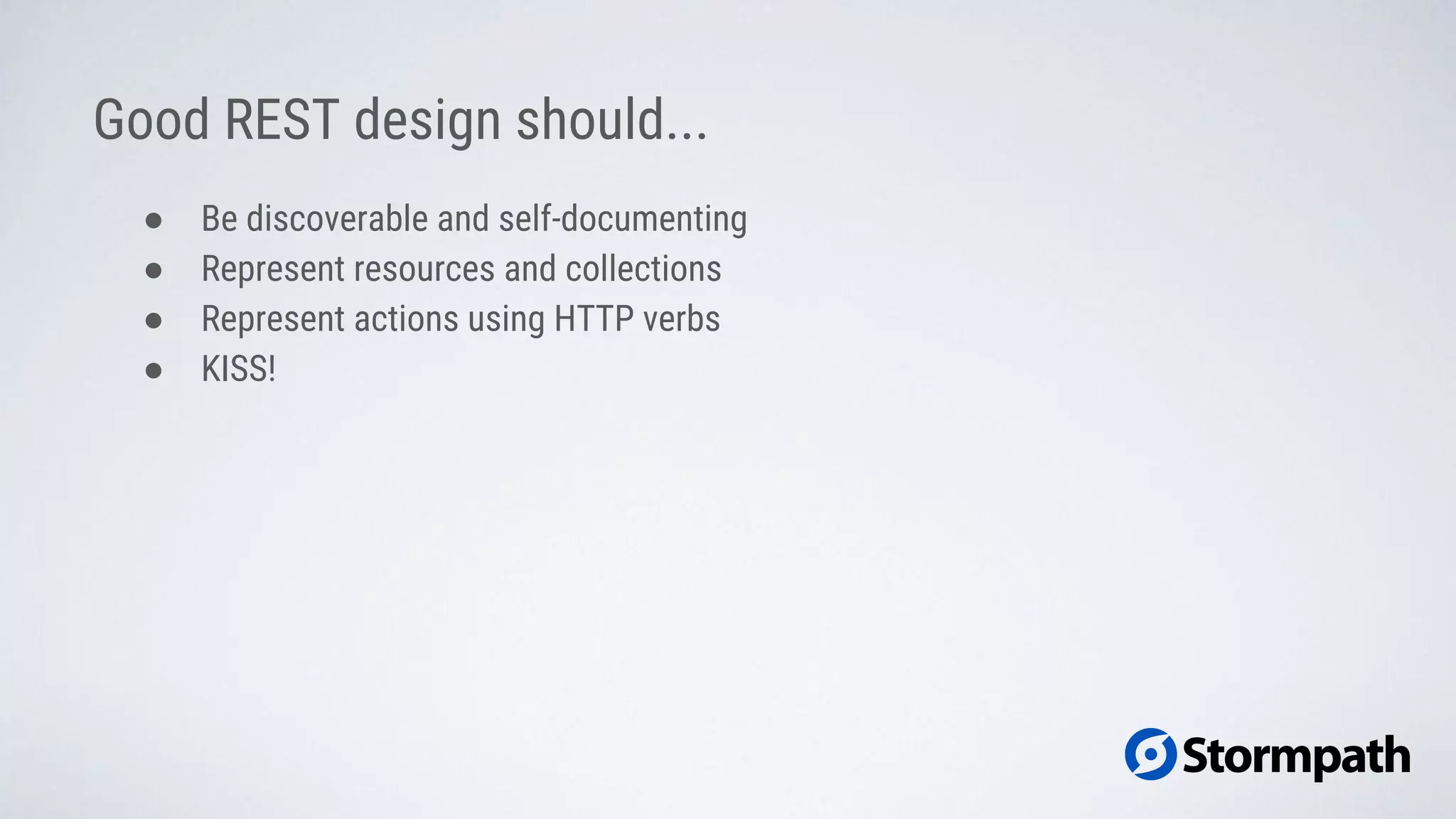
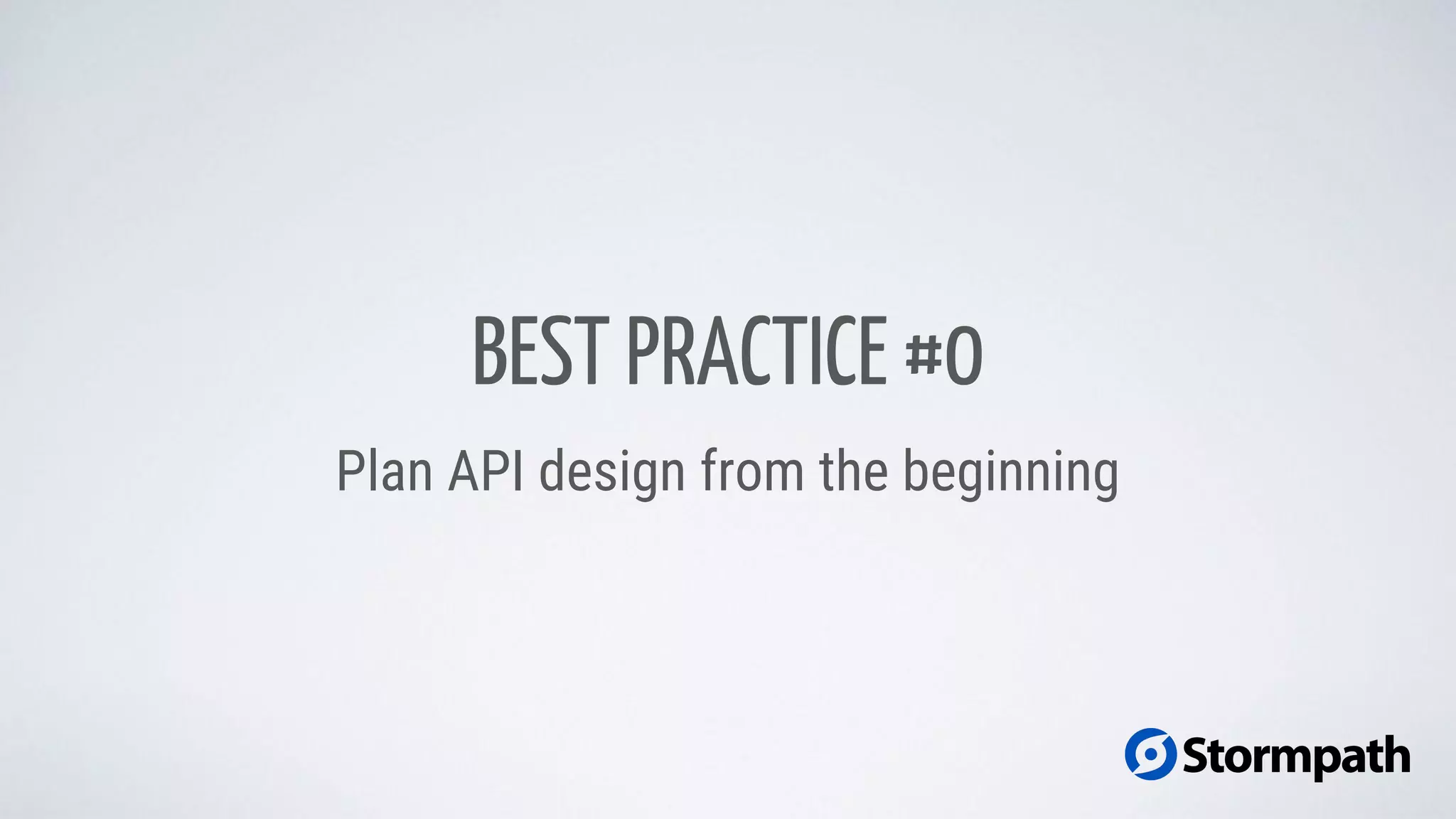
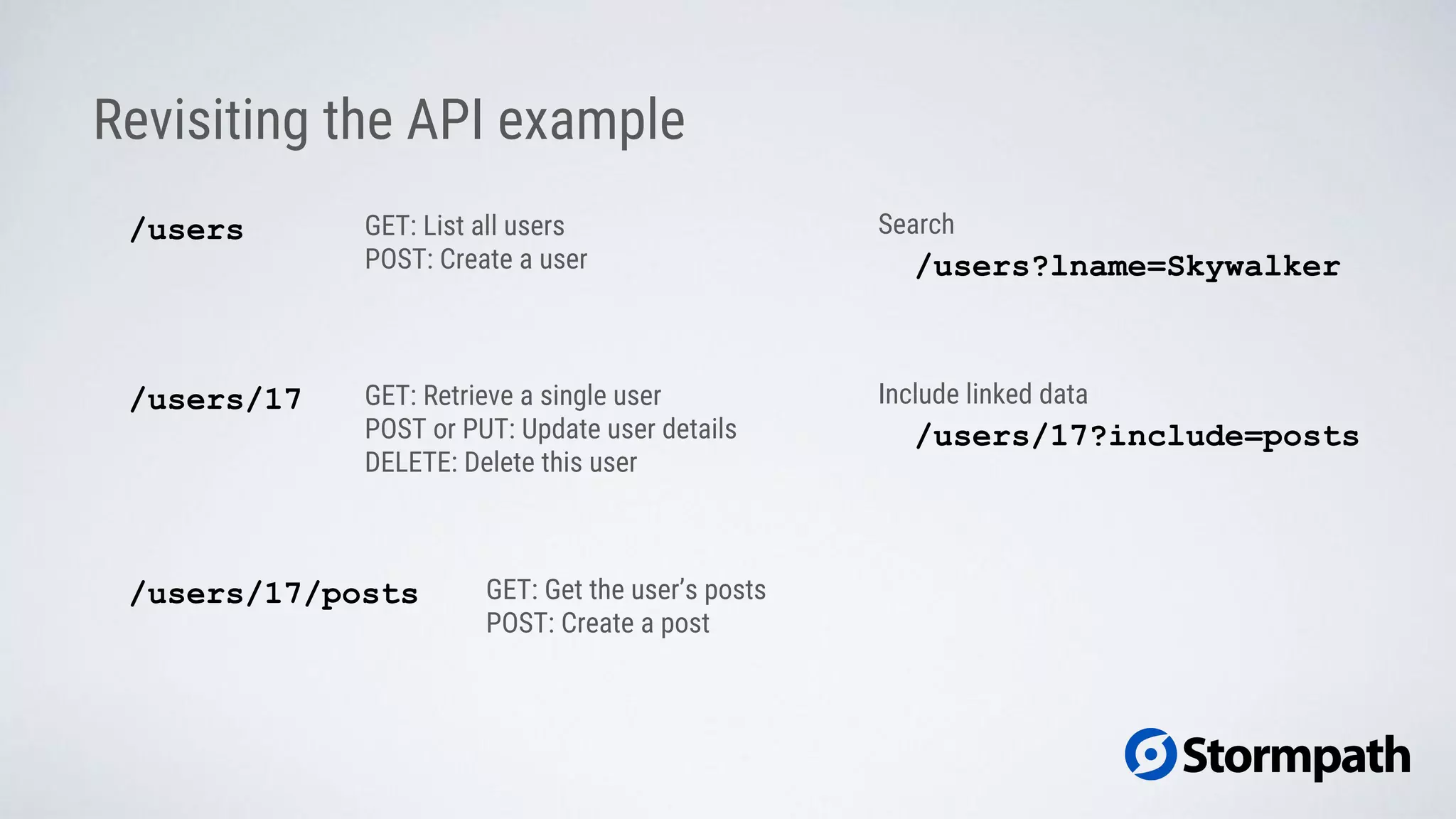
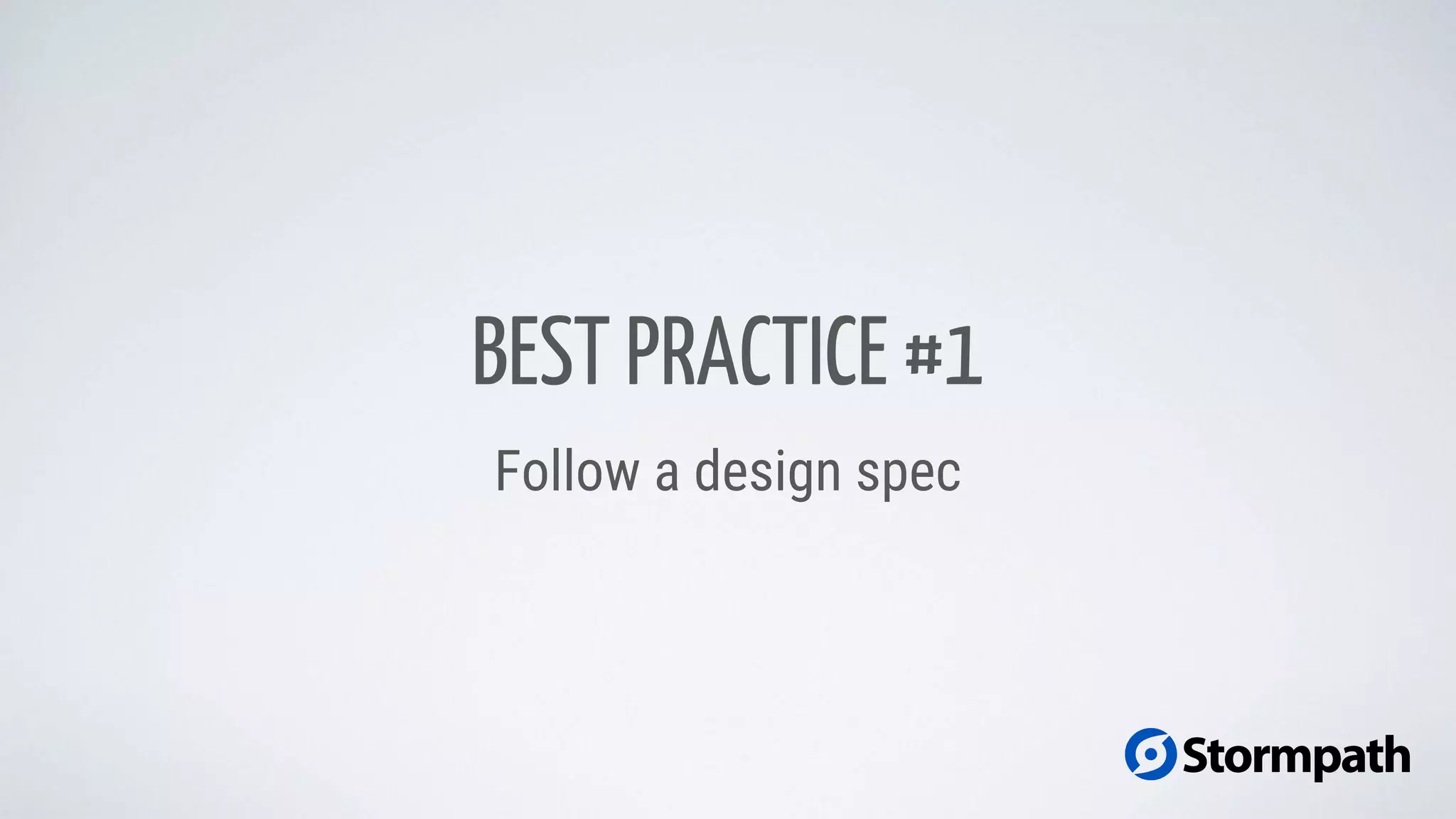
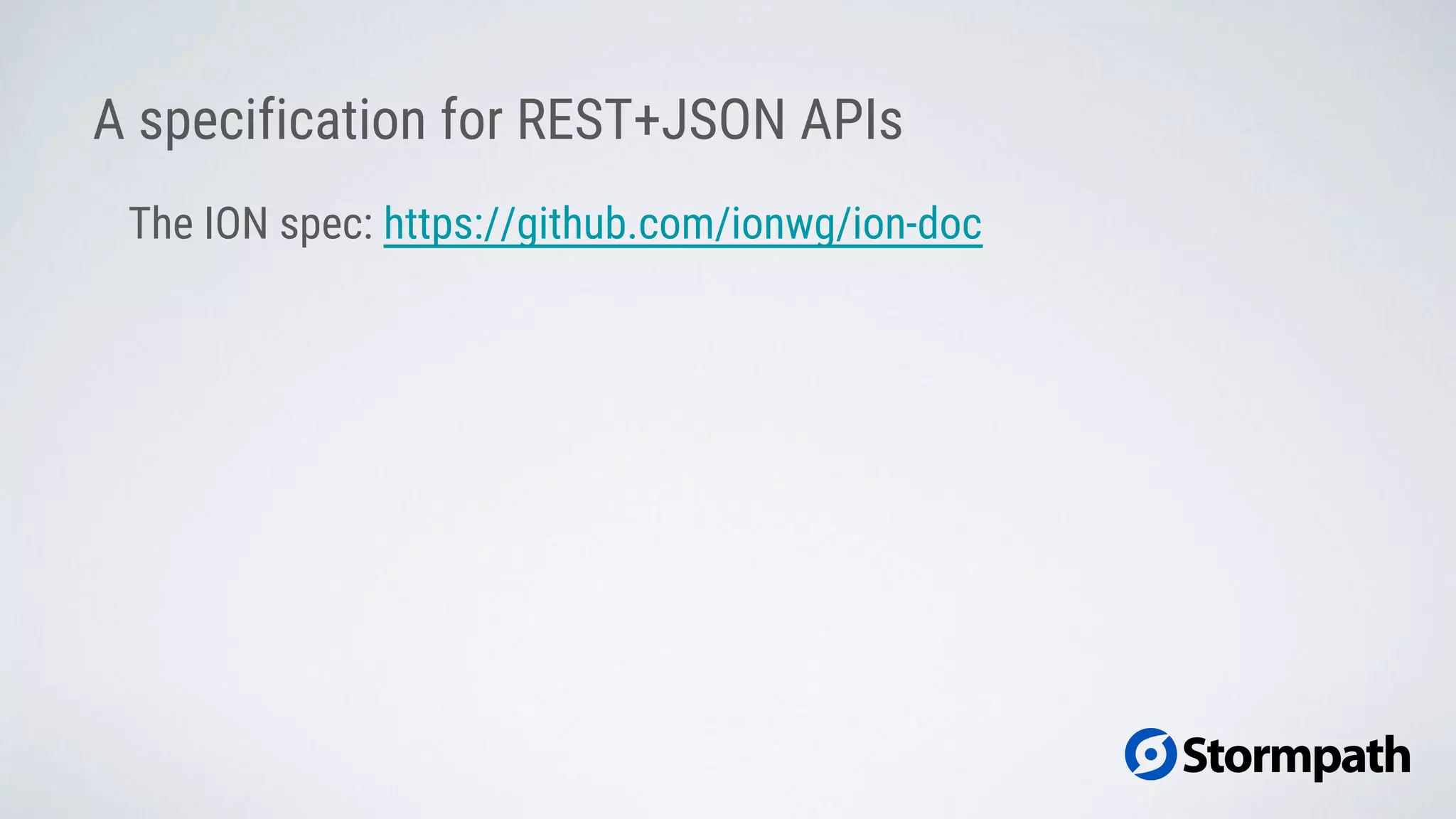
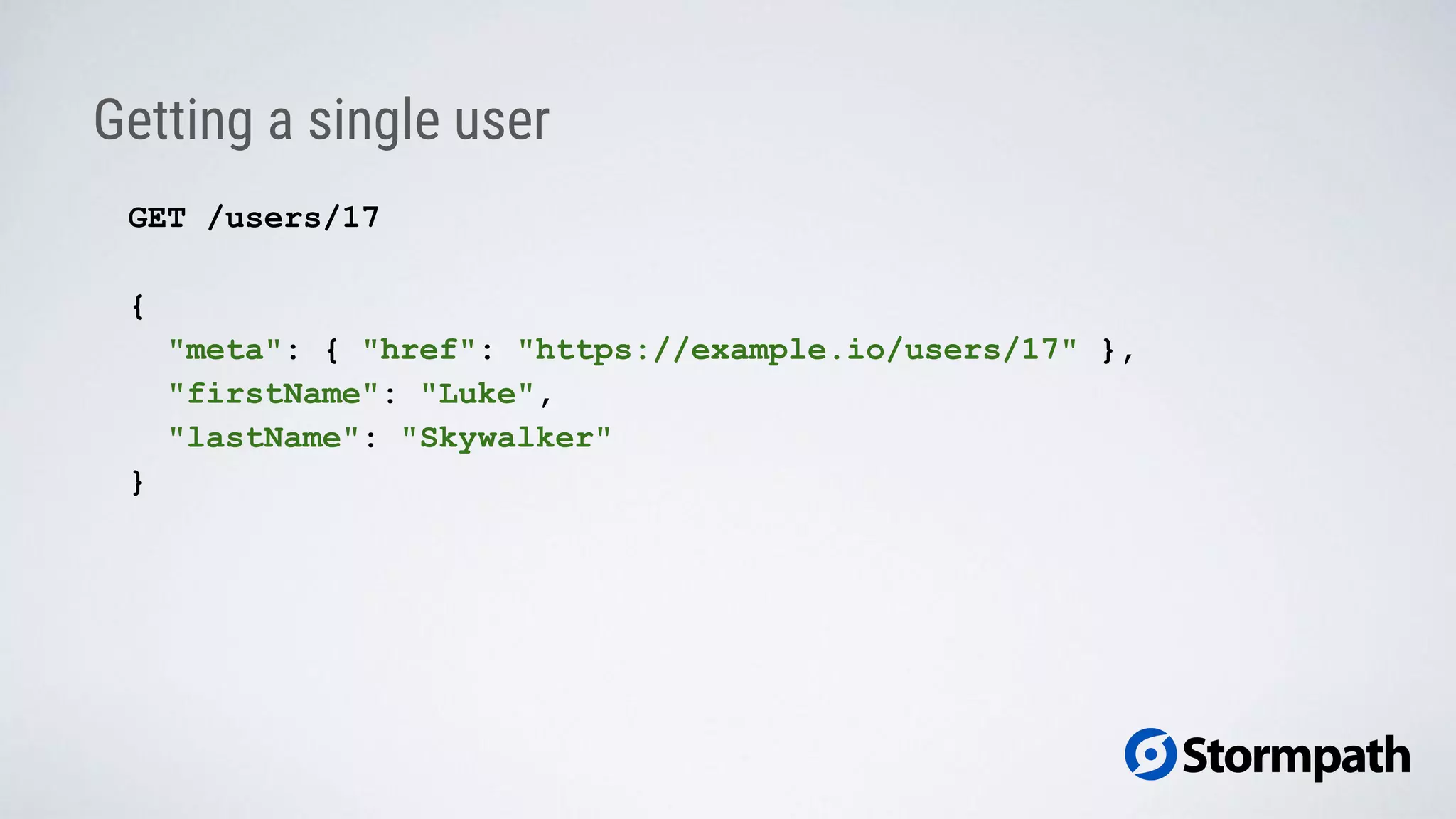
![Getting a list of users
GET /users
{
"meta": { "href": "https://example.io/users", "rel": ["collection"] },
"items": [{
"meta": { "href": "https://example.io/users/17" },
"firstName": "Luke",
"lastName": "Skywalker"
}, {
"meta": { "href": "https://example.io/users/18" },
"firstName": "Han",
"lastName": "Solo"
}]
}](https://image.slidesharecdn.com/webinarbuildingbeautifulrestapiswithasp-161215211415/75/Building-Beautiful-REST-APIs-with-ASP-NET-Core-15-2048.jpg)
![The starting point (API root)
GET /
{
"meta": { "href": "https://example.io/" },
"users": {
"meta": {
"href": "https://example.io/users",
"rel": ["collection"],
}
}
}](https://image.slidesharecdn.com/webinarbuildingbeautifulrestapiswithasp-161215211415/75/Building-Beautiful-REST-APIs-with-ASP-NET-Core-16-2048.jpg)
